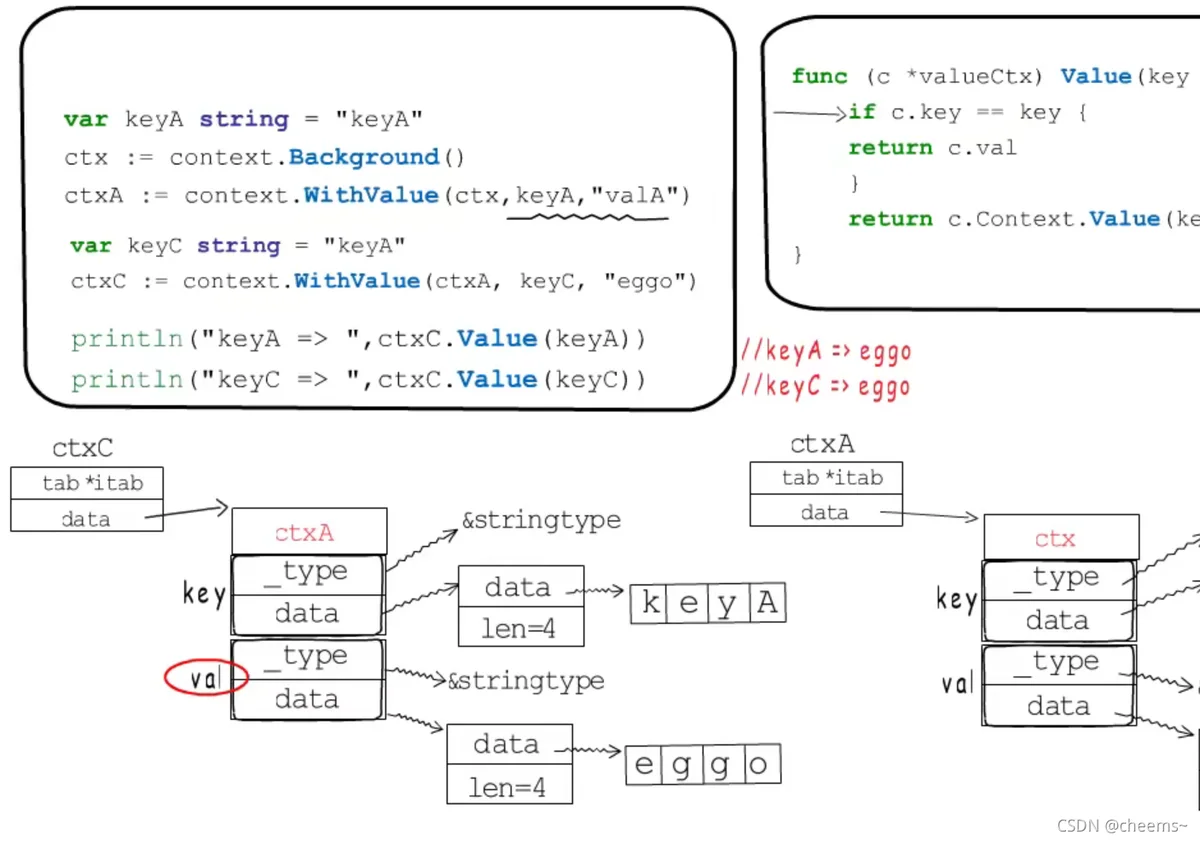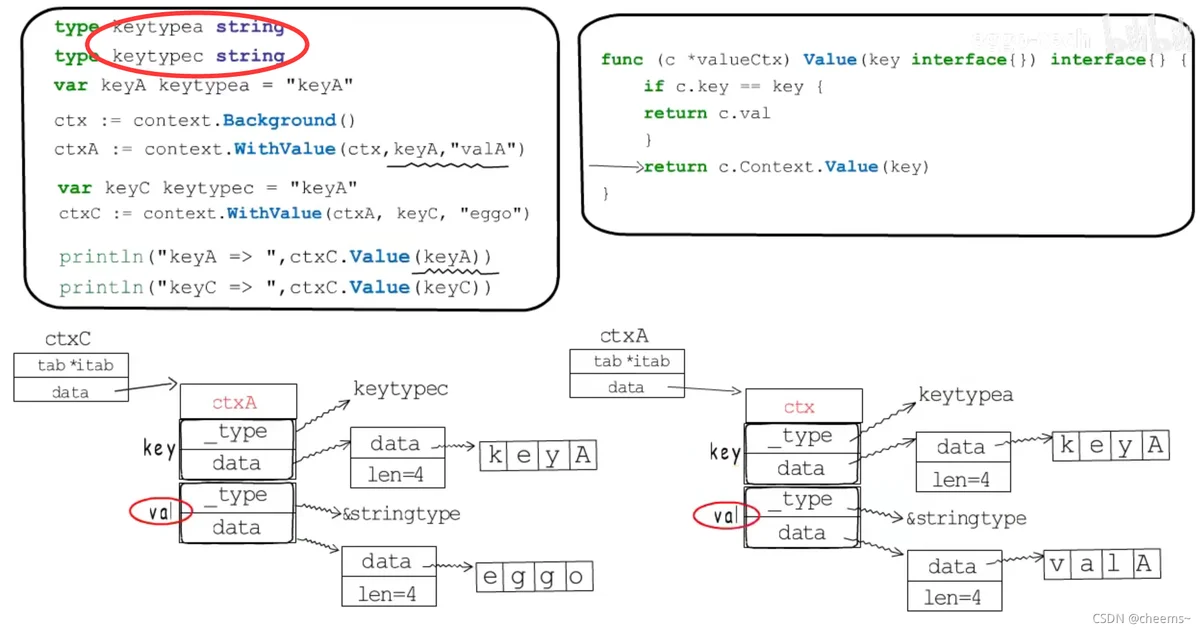前言
- context 主要用来在 goroutine 之间传递上下文信息 - 取消信号、超时时间、截止时间、k-v 等
- Context上下文 - 结合Linux操作系统的CPU上下文切换/子进程与父进程进行理解
- 如何优雅地使用context - 与select配合使用,管理协程的生命周期
- Context的底层实现是什么? - mutex与channel的结合,前者用于初始部分参数,后者用于通信
代码
package main
import (
"context"
"fmt"
"time"
)
// Tip: 通过 cancel 主动关闭
func ctxCancel() {
ctx, cancel := context.WithCancel(context.Background())
go func(ctx context.Context) {
select {
case <-ctx.Done():
fmt.Println(ctx.Err())
case <-time.After(time.Millisecond * 100):
fmt.Println("Time out")
}
}(ctx)
cancel() //外部调用cancel(),其ctx.Done()将会接收到channel信息
}
// Tip: 通过超时,自动触发
func ctxTimeout() {
ctx, cancel := context.WithTimeout(context.Background(), time.Millisecond*10) //10毫秒后会自动触发
// 主动执行cancel,也会让协程收到消息
defer cancel()
go func(ctx context.Context) {
select {
case <-ctx.Done():
fmt.Println(ctx.Err())
case <-time.After(time.Millisecond * 100):
fmt.Println("Time out")
}
}(ctx)
time.Sleep(time.Second)
}
// Tip: 通过设置截止时间,触发time out
func ctxDeadline() {
ctx, cancel := context.WithDeadline(context.Background(), time.Now().Add(10*time.Millisecond))
defer cancel()
go func(ctx context.Context) {
select {
case <-ctx.Done():
fmt.Println(ctx.Err())
case <-time.After(time.Millisecond * 100):
fmt.Println("Time out")
}
}(ctx)
time.Sleep(time.Second)
}
// Tip: 用Key/Value传递参数,可以浅浅封装一层,转化为自己想要的结构体
func ctxValue() {
ctx := context.WithValue(context.Background(), "user", "wxf")
go func(ctx context.Context) {
v, ok := ctx.Value("user").(string)
if ok {
fmt.Println("pass user value", v)
}
}(ctx)
time.Sleep(time.Second)
}
注意点
子节点覆盖父节点数据的情况

最好不要直接使用stirng,int这种基础类型作为key,而是用自定义类型包装一下

valueCtx通过context形成了一个链表结构,不过需要注意,context本身是本着不可改变的模式设计的,所以不要试图修改ctx里面保存的值
参考
深入理解Golang之context
【Golang】Context了解下~
